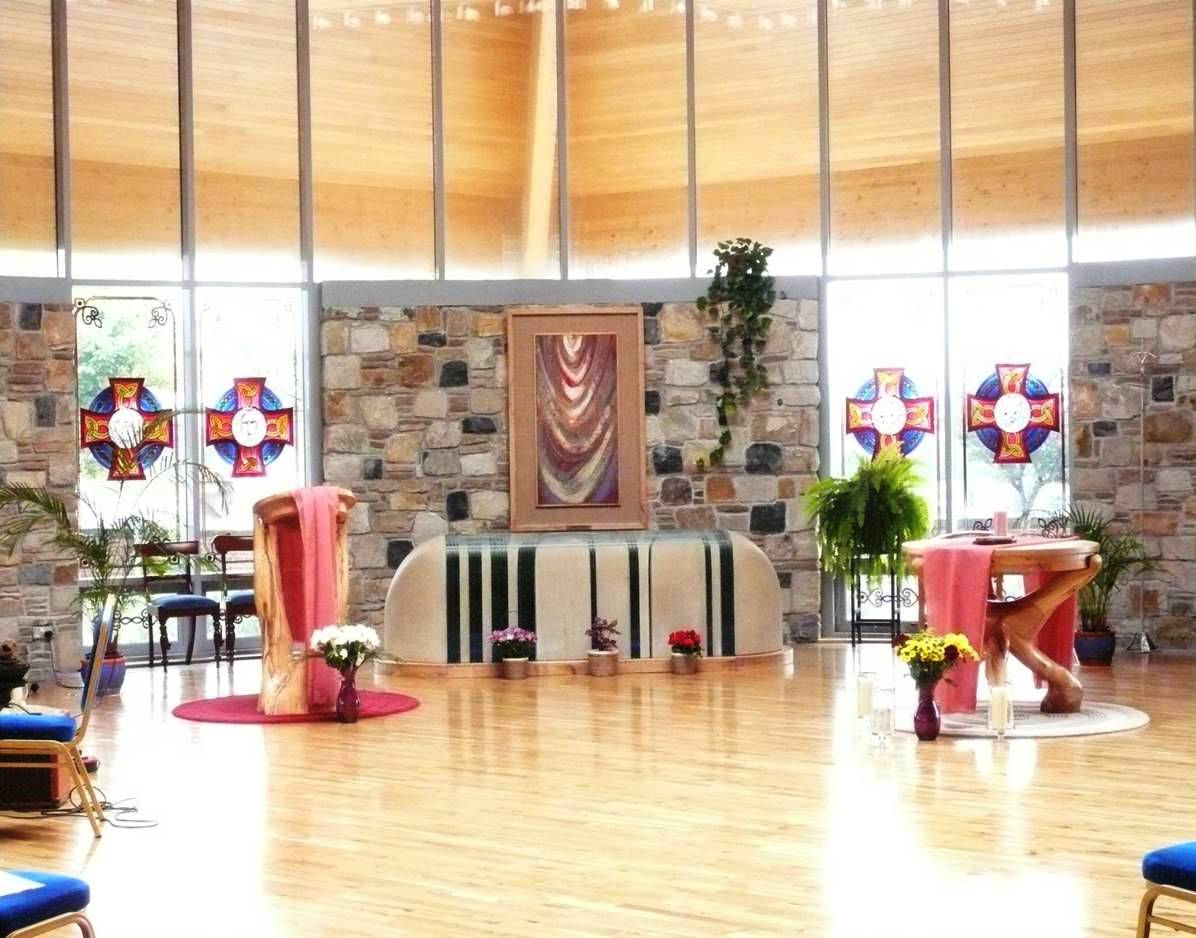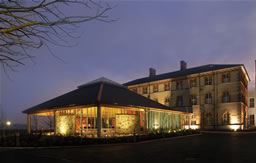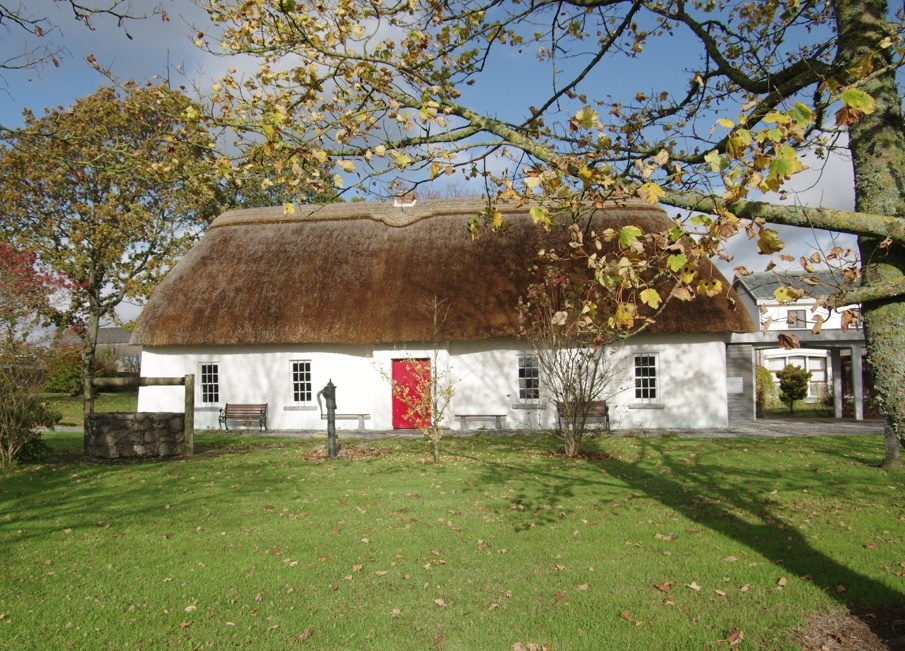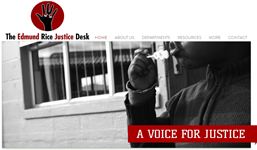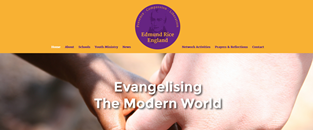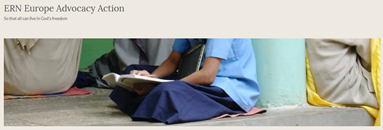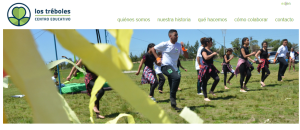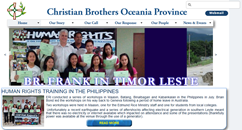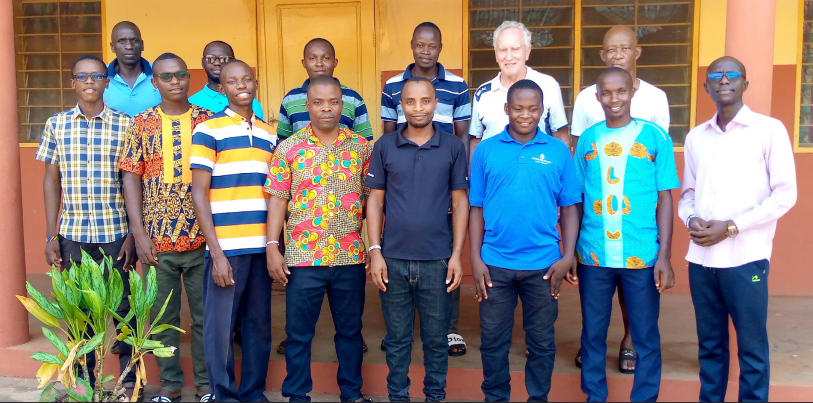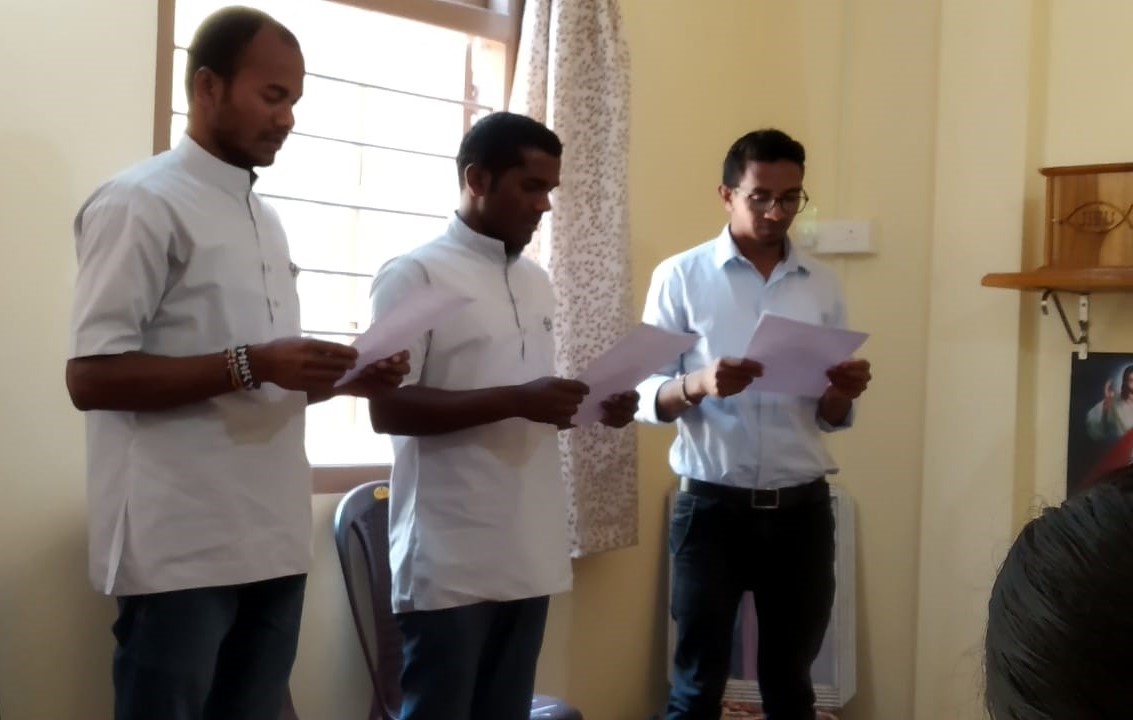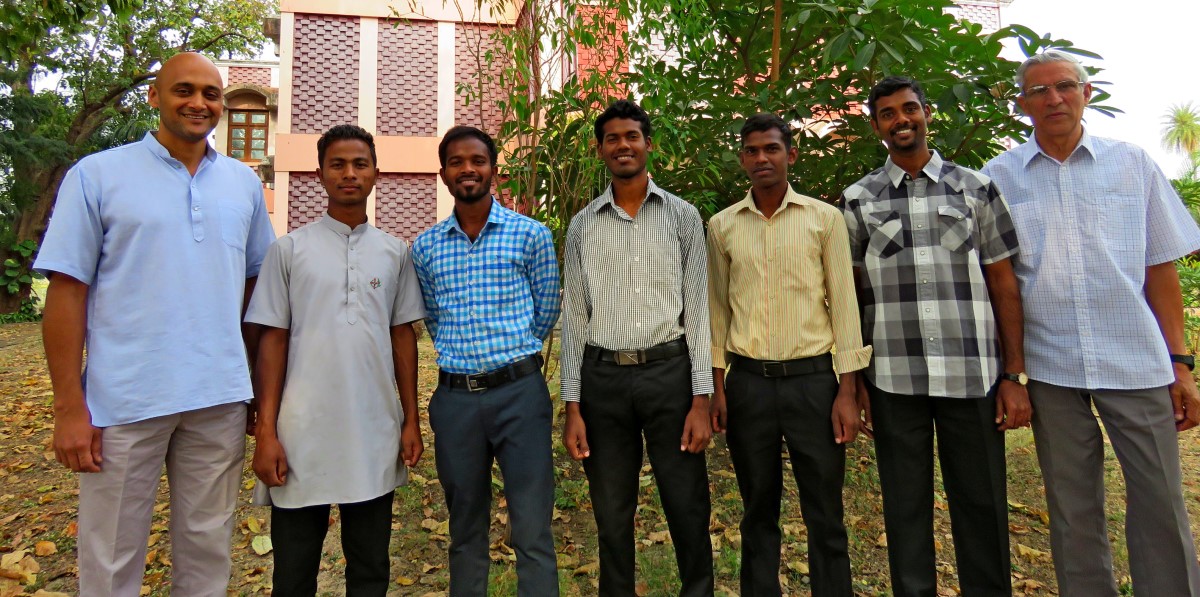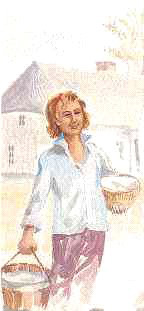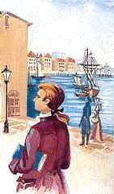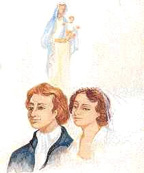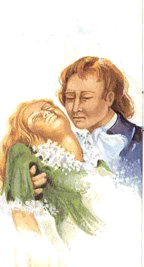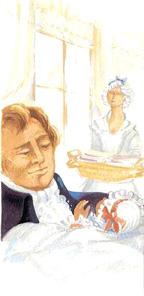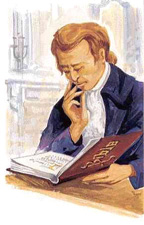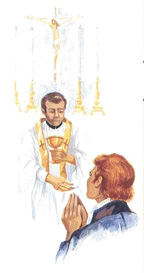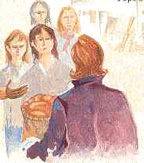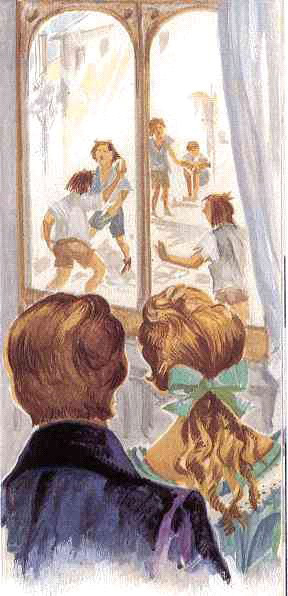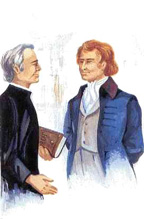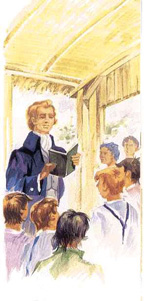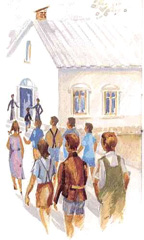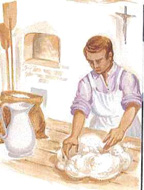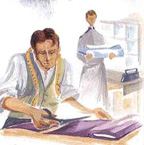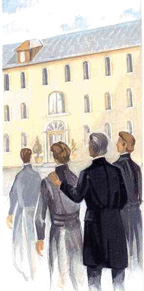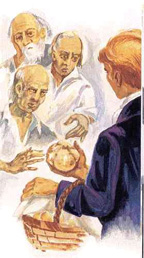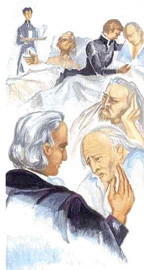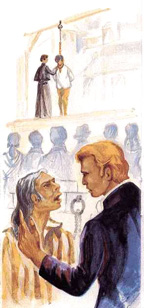West Africa Development Office
- Details
- Hits: 2292
Take a look at the amazing empowering work of the Development Office in West Africa.
Who we are and What We Do
The Christian Brothers Development Office (CBDO) is the development arm of the Congregation of Christian Brothers in West Africa Area. Guided by Presence, compassion and Liberation, we empower marginalized communities through education, advocacy, livelihoods, social justice and gender equality.
By mobilizing resources, managing projects, and fostering partnerships, we uplift vulnerable populations, especially women, children, and youth. Through fundraising, project implementation, and capacity-building, we collaborate with donors, partners, and communities to create sustainable solutions. Our mission is to promote human dignity, social inclusion, and long-term development, ensuring lasting change where it is most needed.
Seeds of Change Project - Mabureh Village, near Makeni
In Mabureh, a rural village in Bombali District, North Sierra Leone, where deep-rooted patriarchal norms and economic barriers have long dictated that agriculture is a man’s domain, the Seeds of Change Project is rewriting the narrative. Women in this male-dominated community have historically faced limited access to land, financial resources and decision-making power, forcing them into subsistence roles with little or no control over their economic futures. The absence of social amenities and government support further compounded their struggles, leaving them vulnerable and without opportunities for economic growth.
However, through the unwavering commitment of this project, funded by Misean Cara, Cbert, UNIDO and the Combined Services for Third World Fund (CSTWF), women are now taking center stage in agriculture, proving that they not only belong in farming but can thrive in it. The three-year project aims to empower 100 women farmers—50 in the first year, 75 in the second, and 100 in the third—providing them with the tools, skills, and access needed to succeed in sustainable agriculture.
Now in its first year of full implementation after a successful pilot phase (January–June 2024), the project has already transformed the lives of 50 women farmers, giving them a voice in determining their future. Through strategic engagement with local stakeholders, women now have secure access to farmland, where they practice climate-smart agriculture to boost household income and food sufficiency.
Unlike before, when women’s labor only benefited male landowners, the proceeds from their harvests now go directly to them, allowing them to invest in their families, send their children to school, and improve their overall quality of life.
To sustain this transformation, the project has also linked the women to the Agriculture Department in Makeni, where they receive technical training, mentorship and ongoing support to enhance their productivity and resilience. By challenging societal norms and fostering economic independence, the Seeds of Change Project is proving that agriculture is not just for men—women can do it just as well, if not better. This initiative is not only about farming—it is about empowering women, creating food security and breaking the cycle of inequality in a community where women are finally reclaiming their rightful place in agriculture and beyond.
Work of our Hands Project - Bo
In the heart of Bo Town, where poverty and limited opportunities push many young women and girls toward uncertain and often dangerous paths, the Work of Our Hands Project stands as a beacon of hope.
Bo, as Sierra Leone’s second-largest city, is plagued by social inequalities that disproportionately affect women and girls, leaving them with few avenues for economic independence. Many are trapped in cycles of poverty, exploitation and negative coping mechanisms, making skills training not just a necessity but a lifeline to dignity and empowerment.
In its first year, 30 women and girls completed training in computer studies, tailoring, hairdressing and cosmetology, and catering, while an overwhelming 200+ applicants sought a place in the second cohort of 2025. However, due to budget constraints, only 40 could be accommodated, underscoring the urgent need for expansion.
This initiative is more than just vocational training—it is a powerful movement towards empowering women with the skills, confidence, and independence to break free from the cycle of poverty and become agents of change in their communities.
Adolescent Girls Empowerment Initiative - Blama
In Blama, Small Bo Chiefdom, the harsh realities of early marriage, teenage pregnancy, and limited educational opportunities have long dictated the futures of adolescent girls. In this rural community, deep-rooted gender norms and socio-economic hardships often force young girls to abandon their dreams, pushing them into vulnerable situations where their potential remains untapped. With poverty levels high and access to quality education and vocational training scarce, many girls see marriage and domestic responsibilities as their only path forward, leaving them trapped in cycles of dependency and inequality.
Recognizing the urgent need for intervention, the Adolescent Girls Empowerment Project was piloted in 2022 and 2023, with funding from Edmund Rice Development (ERD), initially targeting 70 girls. The pilot phase uncovered a significant demand for a safe space where girls could learn, grow, and challenge societal barriers.
The three-year project provides holistic support, integrating education, mentorship, leadership training, and life skills development to help girls navigate challenges and break free from poverty and gender-based discrimination. Since its inception, the project has already had a profound impact on the lives of the beneficiaries. Many girls who were previously at risk of dropping out are now actively engaged in their education, pursuing learning with renewed confidence.
Through targeted life skills training in gender rights and reproductive health, the girls are becoming more informed and empowered to make independent choices. The project also fosters strong community engagement by involving parents, traditional leaders, and educators, creating an environment where harmful societal norms are being challenged, and greater support for girls' empowerment is emerging. Additionally, the project team in tandem with the local authorities reviewed the chiefdom bye-laws to ensure stringent measures are in place to promote children’s access to education and free from abuse.
Through advocacy, mentorship, and community collaboration, the Adolescent Girls Empowerment Project is reshaping the future for young women in Blama. What began as a small pilot initiative has now become a transformative force, offering 150 girls hope, dignity, and the power to dream beyond societal limitations.
Over the next three years, the project will continue to expand, ensuring that more girls rise above adversity, claim their rightful place in society, and build a future of limitless possibilities.
Edmund Rice International Training in West Africa
The Edmund Rice International (ERI) training in West Africa Area, led by Br. Tino, provided an invaluable opportunity for project staff, Brothers, teachers, and pupils across Sierra Leone and Liberia to deepen their understanding of human rights and advocacy. Held in multiple locations (Hamilton, Gbarnga and Bo), the sessions equipped participants with essential knowledge and practical skills for effective advocacy.
In Hamilton and Freetown, approximately 30 participants engaged in training covering key topics, including the foundations of human rights, the Universal Declaration of Human Rights (UDHR), the Sustainable Development Goals (SDGs) from a human rights perspective and climate change as a human rights issue. The sessions also explored the charity-of-service model versus the rights-based advocacy model, highlighting the need for sustainable, justice-driven responses to human rights violations.
Following the training in Sierra Leone, Br. Tino spent a week in Liberia working with Brothers and advocacy coordinators at St. Martin School. His engagements emphasized the importance of integrating human rights education into schools and projects, ensuring staff and students are well-equipped to promote justice and equality. Br. Tino also worked with a group of Liberians helping them to draft their UPR submissions to the UN since their UPR comes up in November this year.
Upon returning to Sierra Leone, Br. Tino conducted further training sessions for the postulants at the Christian Brothers formation center in Bo as well as key representatives from the Bo Diocese, followed by a session for staff and students at the Senan Kerrigan Vocational Center in Bo.
These trainings empowered duty bearers and vocational trainees with critical knowledge of human rights principles and their practical applications.
This In-Country ERI training significantly strengthened the capacity of staff and pupils, equipping them with the knowledge needed to engage effectively in advocacy. Participants expressed appreciation for the valuable insights gained into human rights processes and procedures.
The West Africa Area Mission Office extends its gratitude to the ERI team for funding this crucial initiative. Special recognition goes to Br. Tino, whose expertise and commitment ensured impactful training sessions, further enriching our advocacy work and empowering participants to champion human rights in their communities.
Send them an email for more information and to subscribe to their Newsletter.






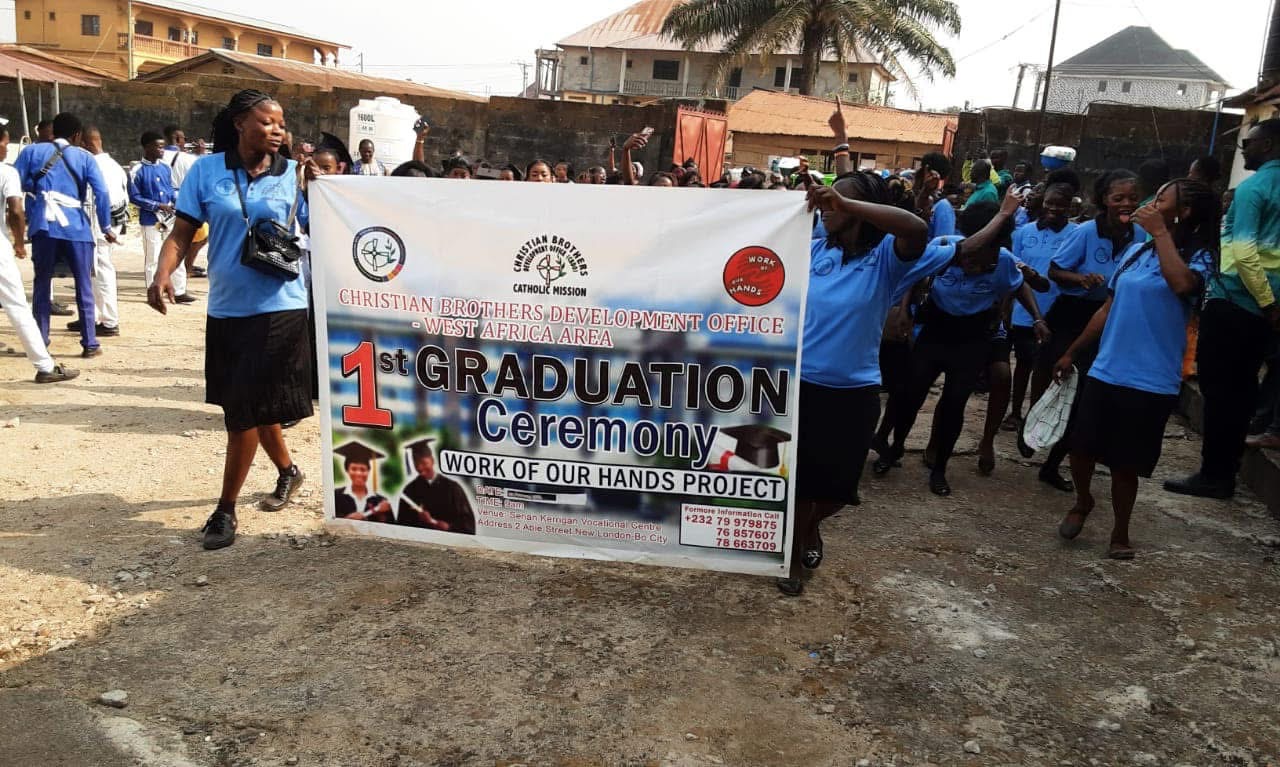

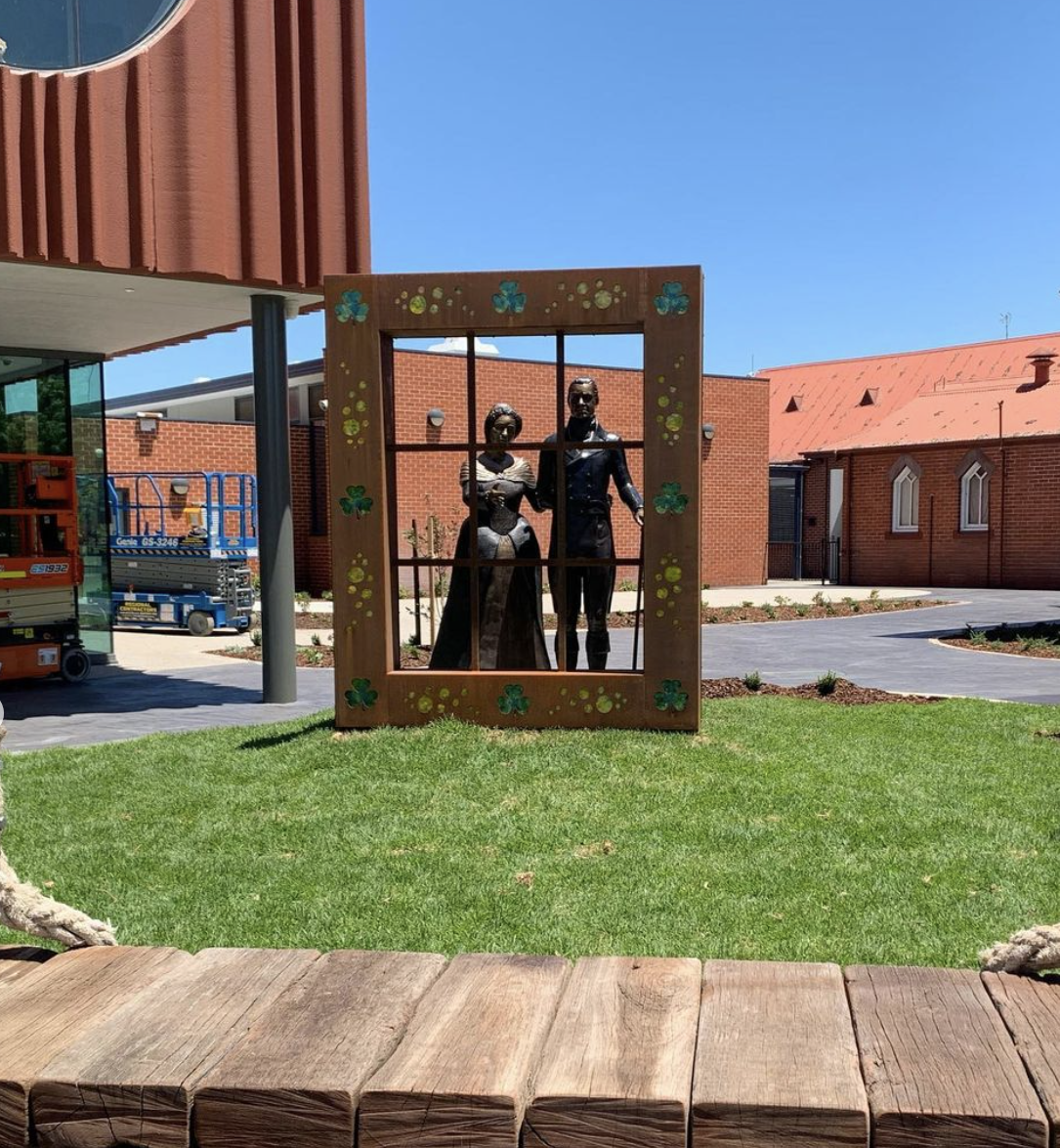
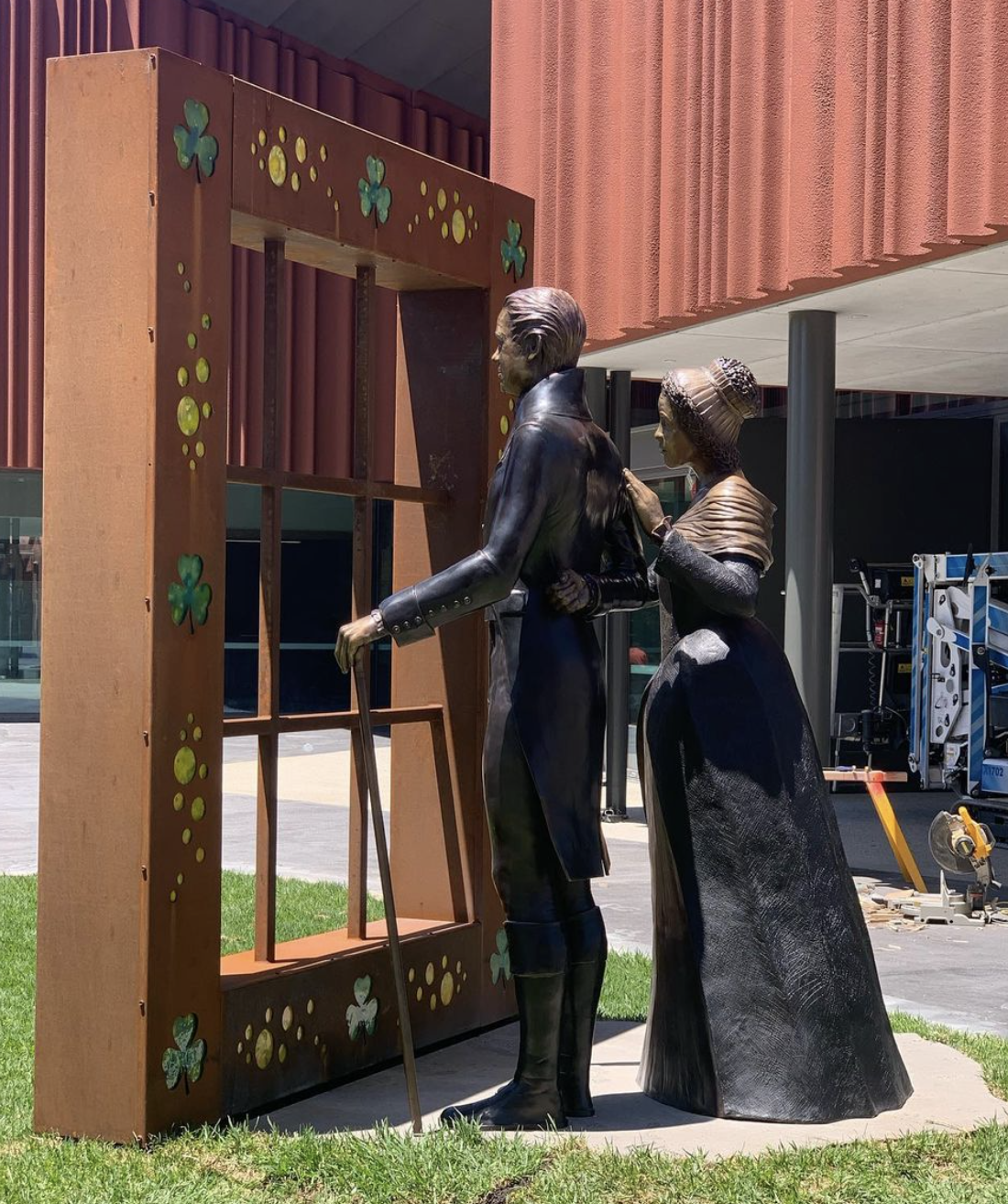
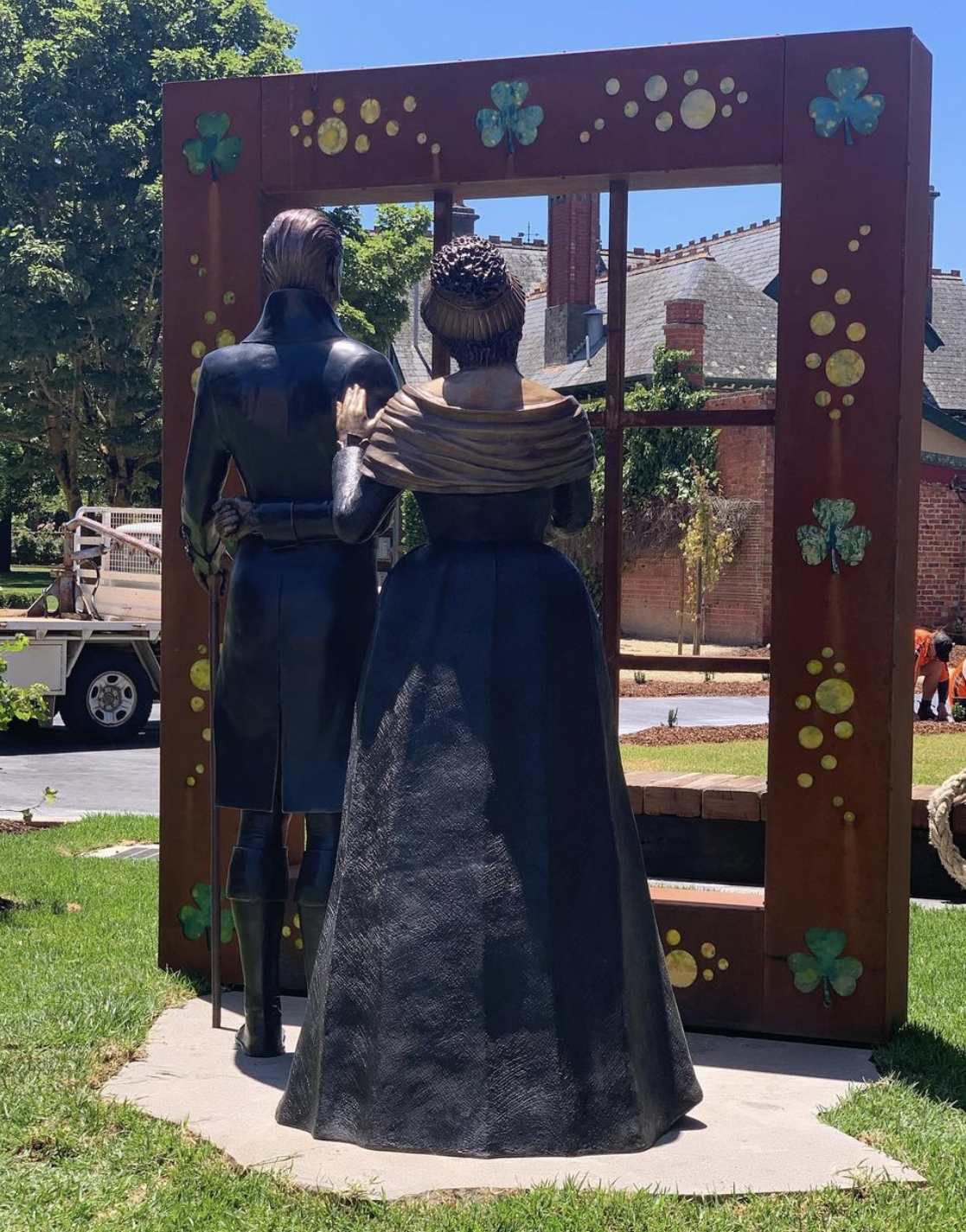
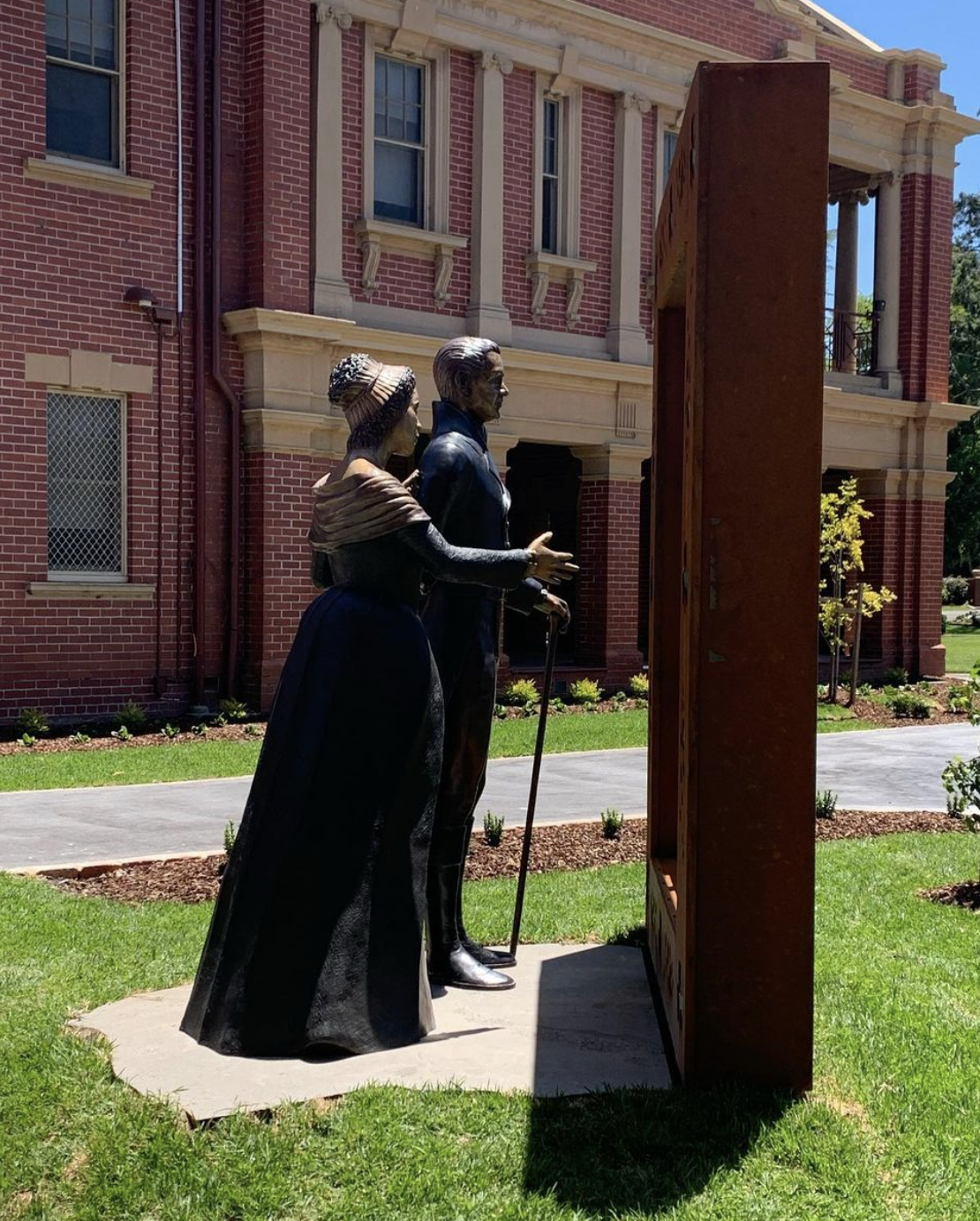
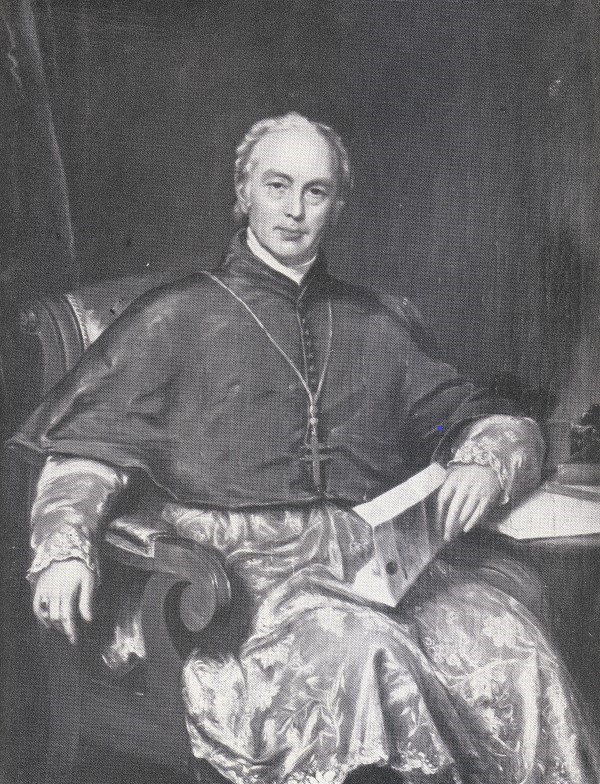 According to Austin Dunphy in Origin (1822): In 1812 in the month of May the house in Hanover Street East, Dublin was founded. The Most Rev. Doctor Murray, whose zealous exertions to promote the welfare of the Institute in that city , deserves particular notice. His Grace not only took its interests warmly to heart in the commencement, but continued and still continues to be its sincere friend.
According to Austin Dunphy in Origin (1822): In 1812 in the month of May the house in Hanover Street East, Dublin was founded. The Most Rev. Doctor Murray, whose zealous exertions to promote the welfare of the Institute in that city , deserves particular notice. His Grace not only took its interests warmly to heart in the commencement, but continued and still continues to be its sincere friend.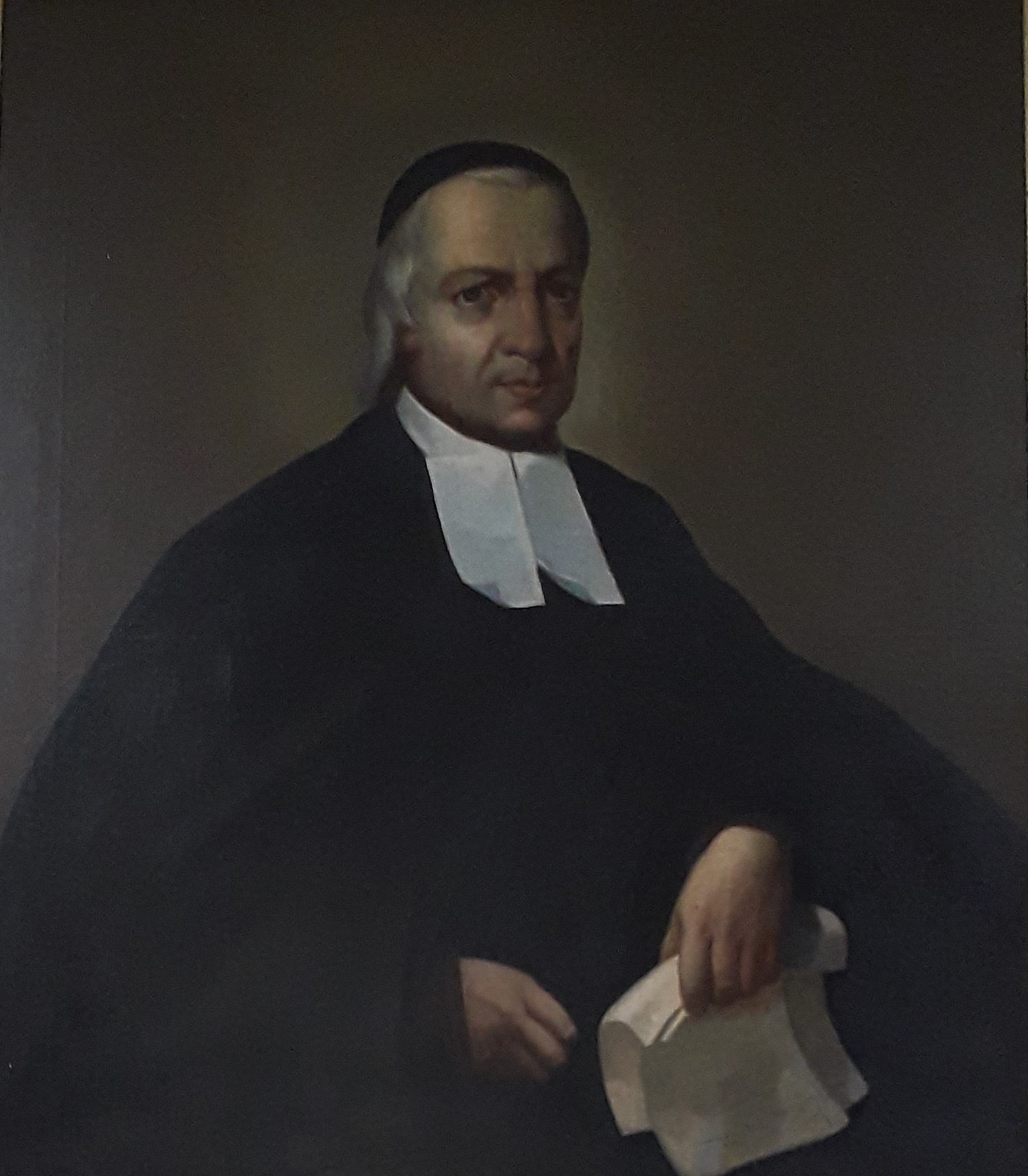 Brother Austin Dunphy, Second Assistant to Edmund Rice, writing to Frere Guillaume (right), the Superior General of the De La Salle Congregation, Paris:
Brother Austin Dunphy, Second Assistant to Edmund Rice, writing to Frere Guillaume (right), the Superior General of the De La Salle Congregation, Paris: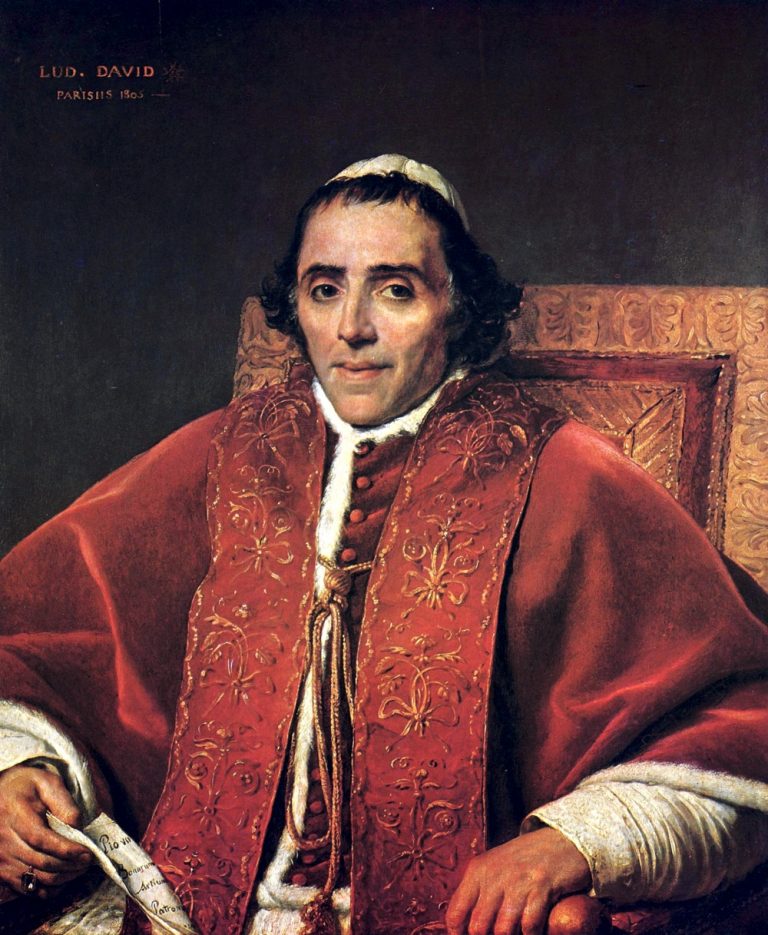 According to Austin Dunphy in Origin (1822): On the 5th of September 1820, the Brief Ad Pastoralis dignitatis fastigium, approving of the Articles and of the Institute itself, was issued. This happy event was the source of much joy to the Brothers. However, for want of a safe conveyance, the Brief did not arrive in Ireland till the Spring of 1821. The Rev. Dr. Peter Kenney of the Society of Jesus arrived in Rome soon after it was issued, and as his stay there was not long, he was the Bearer of this consolatory documents. It is proper to remark here that the Brothers owe a large debt of gratitude to Rev. John Rice, of the Order of Saint Augustine, and brother to Edmund Rice, for his very active and persevering exertions as Agent for the Institute at Rome.
According to Austin Dunphy in Origin (1822): On the 5th of September 1820, the Brief Ad Pastoralis dignitatis fastigium, approving of the Articles and of the Institute itself, was issued. This happy event was the source of much joy to the Brothers. However, for want of a safe conveyance, the Brief did not arrive in Ireland till the Spring of 1821. The Rev. Dr. Peter Kenney of the Society of Jesus arrived in Rome soon after it was issued, and as his stay there was not long, he was the Bearer of this consolatory documents. It is proper to remark here that the Brothers owe a large debt of gratitude to Rev. John Rice, of the Order of Saint Augustine, and brother to Edmund Rice, for his very active and persevering exertions as Agent for the Institute at Rome.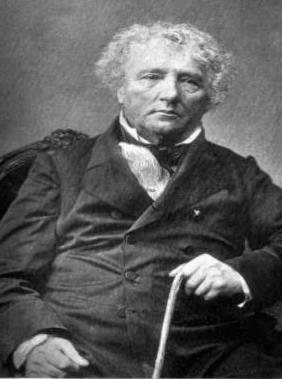
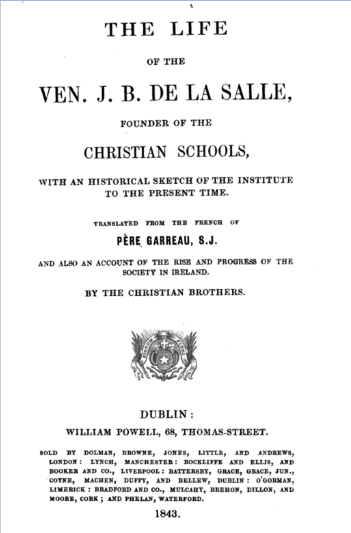 According to Garvan: Perhaps an even more insidious threat came to Edmund personally through the dissidence of some Brothers who tried to undermine his work and his vision. Some even claimed St. John Baptist de la Salle as their founder, and not Edmund Rice. Edmund’s successor as Superior General had his portrait done holding a copy of the life of de la Salle which he himself had written. This painting can still be seen in the Christian Brothers’ Generalate in Rome. This was an extremely painful period for Edmund as he tried to get his Congregation on a sure footing which would enable it to carry on for future generations what he had founded it for.
According to Garvan: Perhaps an even more insidious threat came to Edmund personally through the dissidence of some Brothers who tried to undermine his work and his vision. Some even claimed St. John Baptist de la Salle as their founder, and not Edmund Rice. Edmund’s successor as Superior General had his portrait done holding a copy of the life of de la Salle which he himself had written. This painting can still be seen in the Christian Brothers’ Generalate in Rome. This was an extremely painful period for Edmund as he tried to get his Congregation on a sure footing which would enable it to carry on for future generations what he had founded it for.
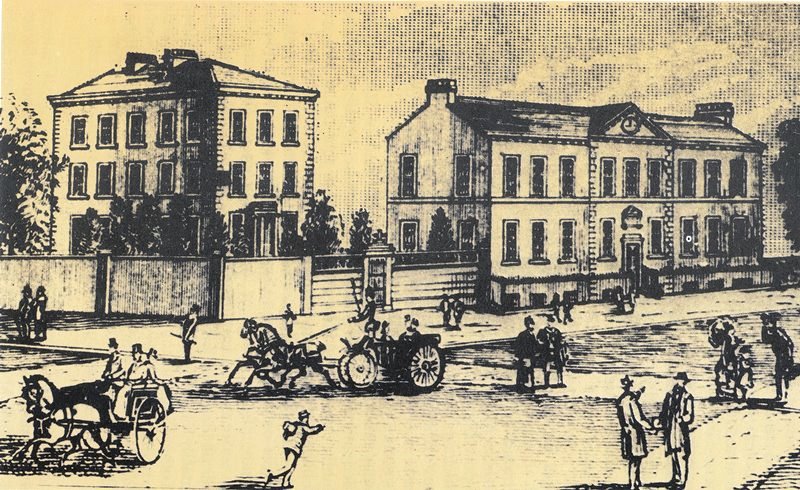 Perhaps no single institution established during Edmund Rice’s administration was the source of more concern and worry to the Founder and his brothers. The school itself was a great success educationally almost from the beginning but obtaining the funds to support it and the novitiate as well as the community of brothers was a major challenge to Edmund during his last years. He was 66 years old when the cornerstone was laid and 69 when the school was open for business.
Perhaps no single institution established during Edmund Rice’s administration was the source of more concern and worry to the Founder and his brothers. The school itself was a great success educationally almost from the beginning but obtaining the funds to support it and the novitiate as well as the community of brothers was a major challenge to Edmund during his last years. He was 66 years old when the cornerstone was laid and 69 when the school was open for business.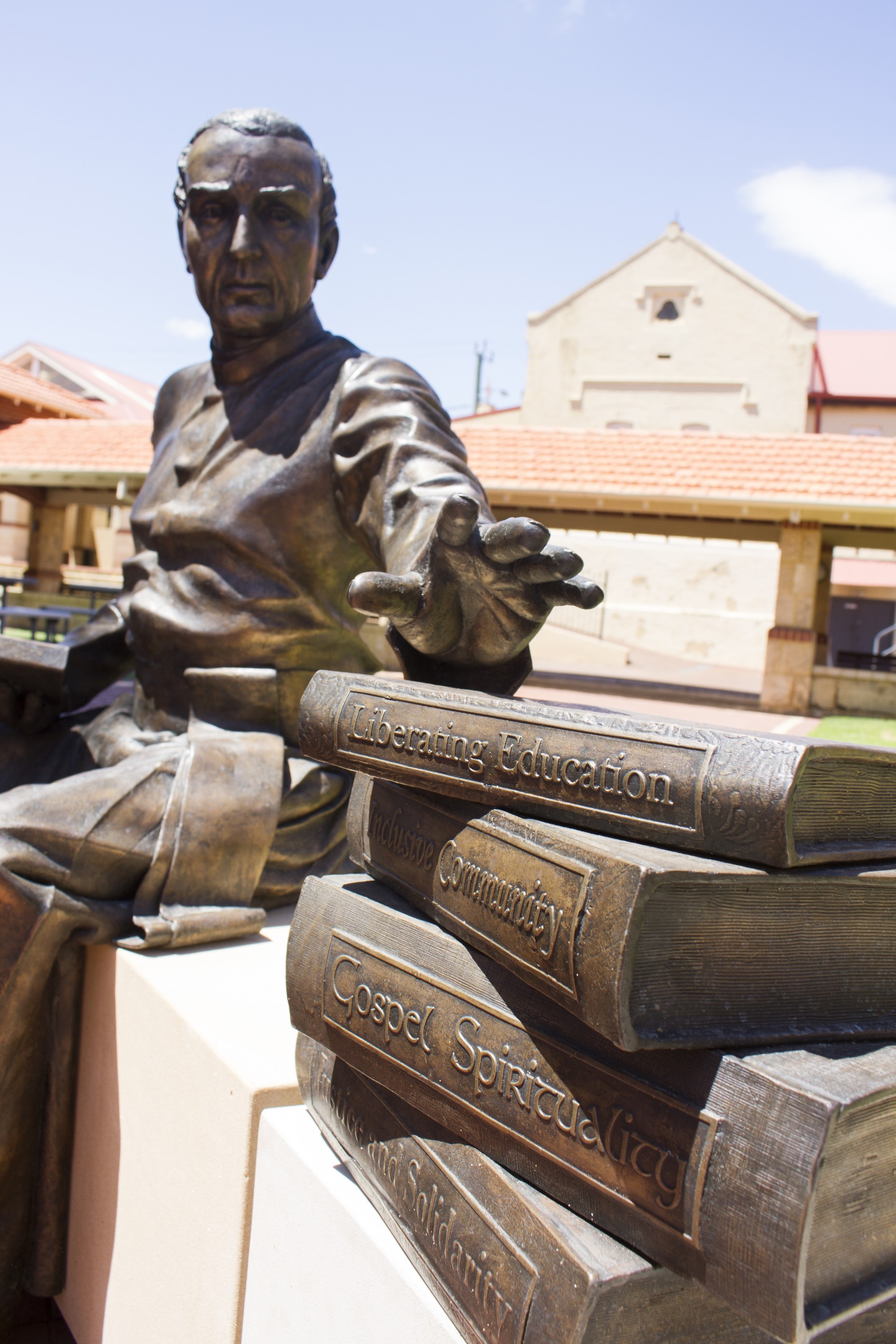 Sitting on a bench in the centre of the College Cloisters at CBC Fremantle (Australia), 'Eddy', as he's known to many boys at the College, is a stunning bronze sculpture that provides a constant reminder of the impact each one of us can have on the world.
Sitting on a bench in the centre of the College Cloisters at CBC Fremantle (Australia), 'Eddy', as he's known to many boys at the College, is a stunning bronze sculpture that provides a constant reminder of the impact each one of us can have on the world.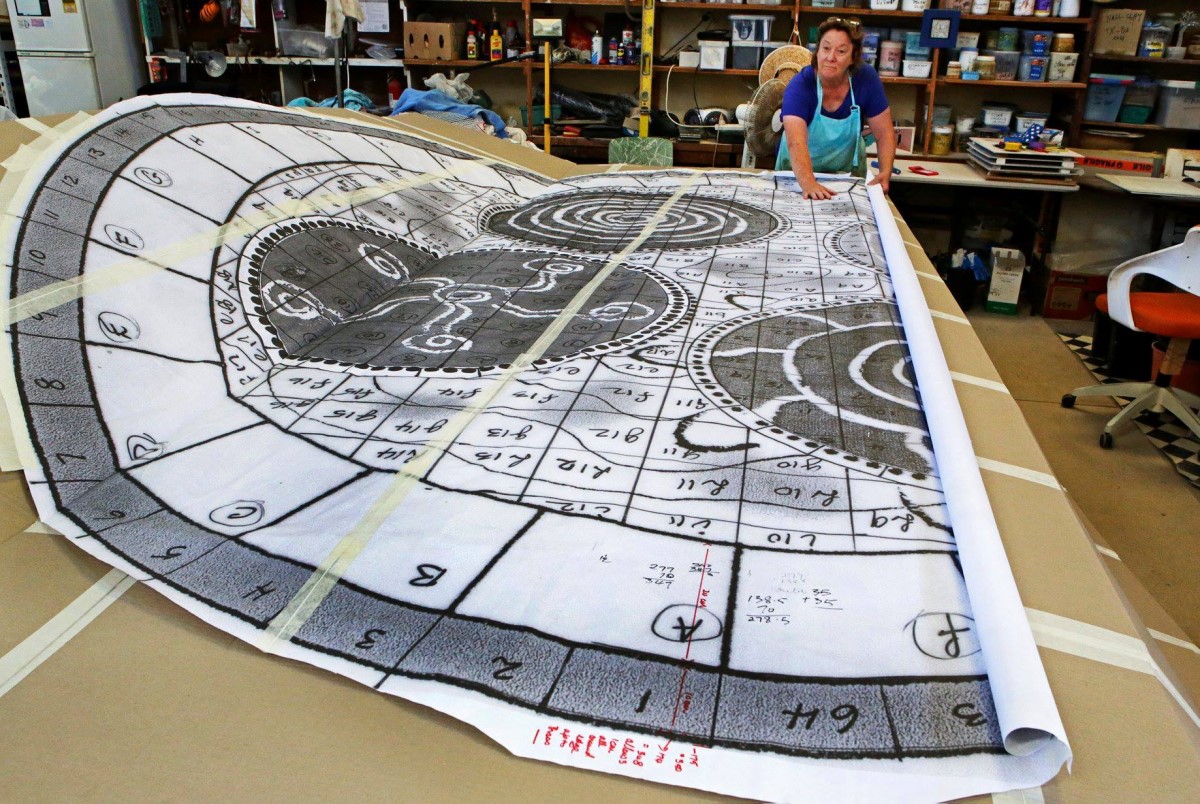 At Eddy's feet is a spectacular, hand-crafted mosaic, produced by local artist Jenny Dawson. Each tile tells its own story, and together, they form an eye-catching account of the College's history. In the centre, swimming in sky blue swirls symbolising the College's proximity to the ocean and the port city of Fremantle, are the Indigenous symbols for each of the Touchstones, in recognition of the original custodians of the land on which the campus has stood for more than a century. The artwork is bordered by 32 tiles containing key moments in CBC's history, including photos of graduating classes, academic records and other documents from the archives.
At Eddy's feet is a spectacular, hand-crafted mosaic, produced by local artist Jenny Dawson. Each tile tells its own story, and together, they form an eye-catching account of the College's history. In the centre, swimming in sky blue swirls symbolising the College's proximity to the ocean and the port city of Fremantle, are the Indigenous symbols for each of the Touchstones, in recognition of the original custodians of the land on which the campus has stood for more than a century. The artwork is bordered by 32 tiles containing key moments in CBC's history, including photos of graduating classes, academic records and other documents from the archives.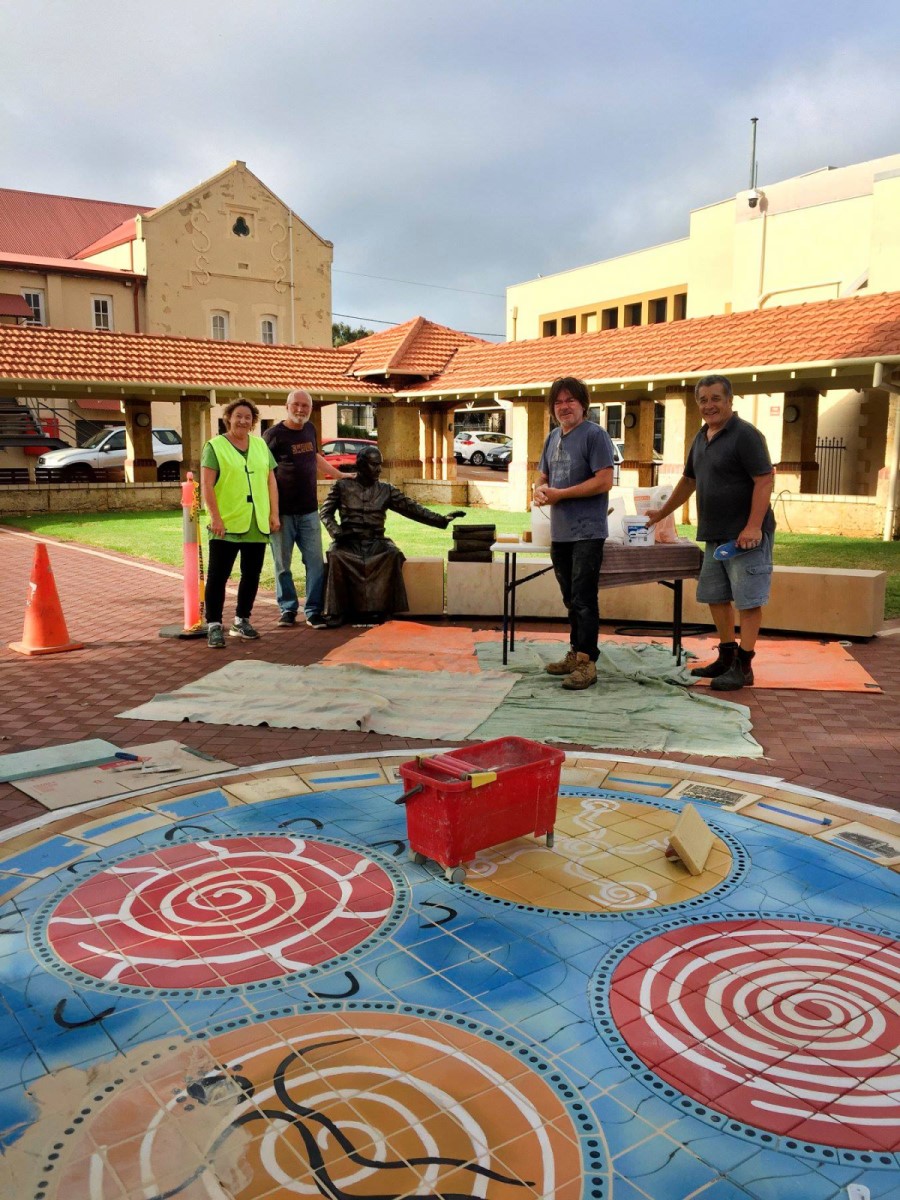 Ms Dawson says the mosaic was an incredible test of her ceramic skills, and believes it was “touched by the hand of god” as a big black circle mysteriously appeared through the clay on one of the tiles.
Ms Dawson says the mosaic was an incredible test of her ceramic skills, and believes it was “touched by the hand of god” as a big black circle mysteriously appeared through the clay on one of the tiles.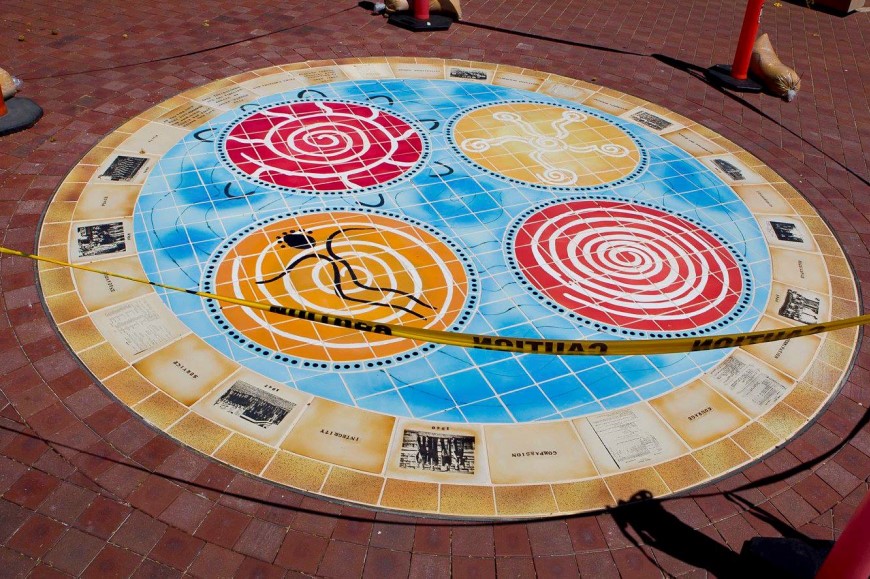
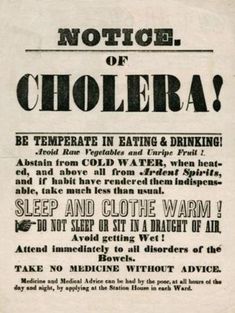
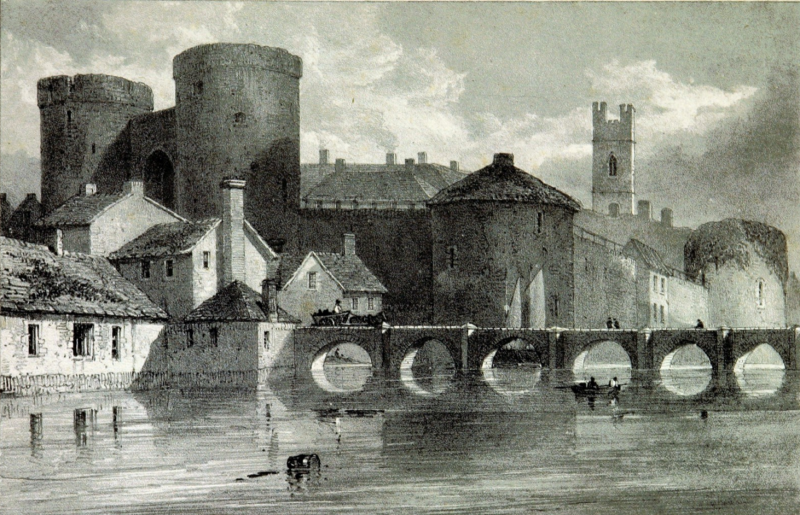
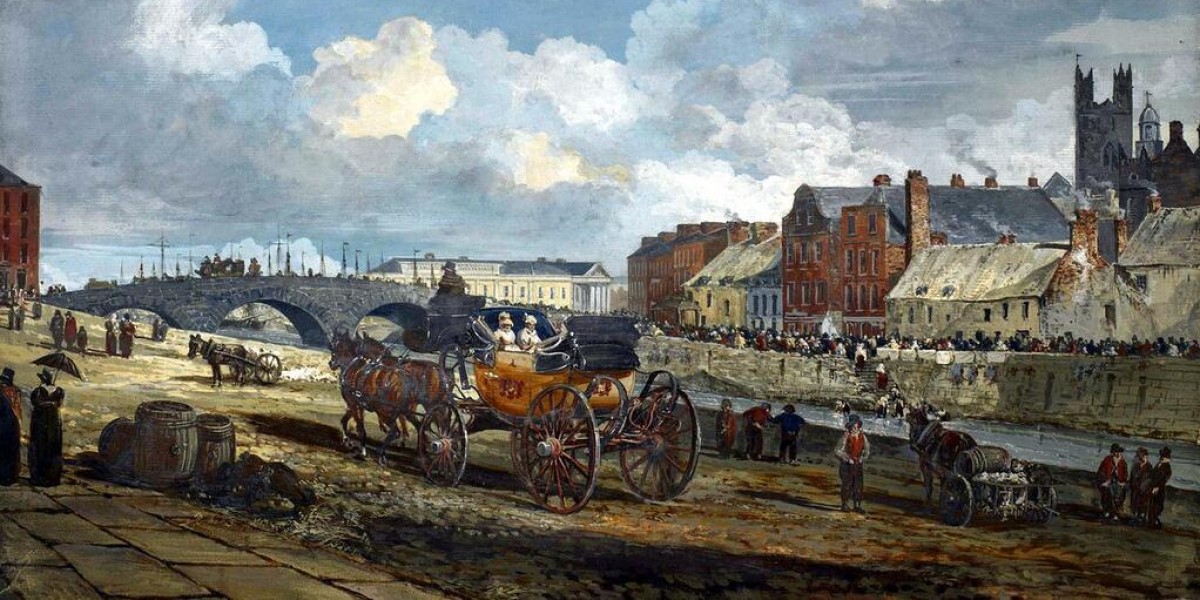 Brother Virgilius Jones who had lived with some of the Limerick Brothers recorded the following: “From the details which have come down to us of the labours of the Brothers during the epidemic in Limerick, it is clear that no pen could do justice to their charity and patient endurance, in all their ministrations. All day long they were to be seen at the bedside of the sufferers attending to every call, to soothe every pang, using every appliance possible to keep down the burning fever or to ease their tortured limbs. The night also found the Brothers at their post, the silence of which was only broken by the heart-rending cries of the sufferers, calling aloud for the Brothers by their names, and whose very presence at the bed-side seemed to have a soothing effect." He goes on to describe the conditions of the locations, the entrance crowded with coffins awaiting burial and with coffins waiting for corpses, the Brothers stepping over 10 or 15 bodies each morning.
Brother Virgilius Jones who had lived with some of the Limerick Brothers recorded the following: “From the details which have come down to us of the labours of the Brothers during the epidemic in Limerick, it is clear that no pen could do justice to their charity and patient endurance, in all their ministrations. All day long they were to be seen at the bedside of the sufferers attending to every call, to soothe every pang, using every appliance possible to keep down the burning fever or to ease their tortured limbs. The night also found the Brothers at their post, the silence of which was only broken by the heart-rending cries of the sufferers, calling aloud for the Brothers by their names, and whose very presence at the bed-side seemed to have a soothing effect." He goes on to describe the conditions of the locations, the entrance crowded with coffins awaiting burial and with coffins waiting for corpses, the Brothers stepping over 10 or 15 bodies each morning.



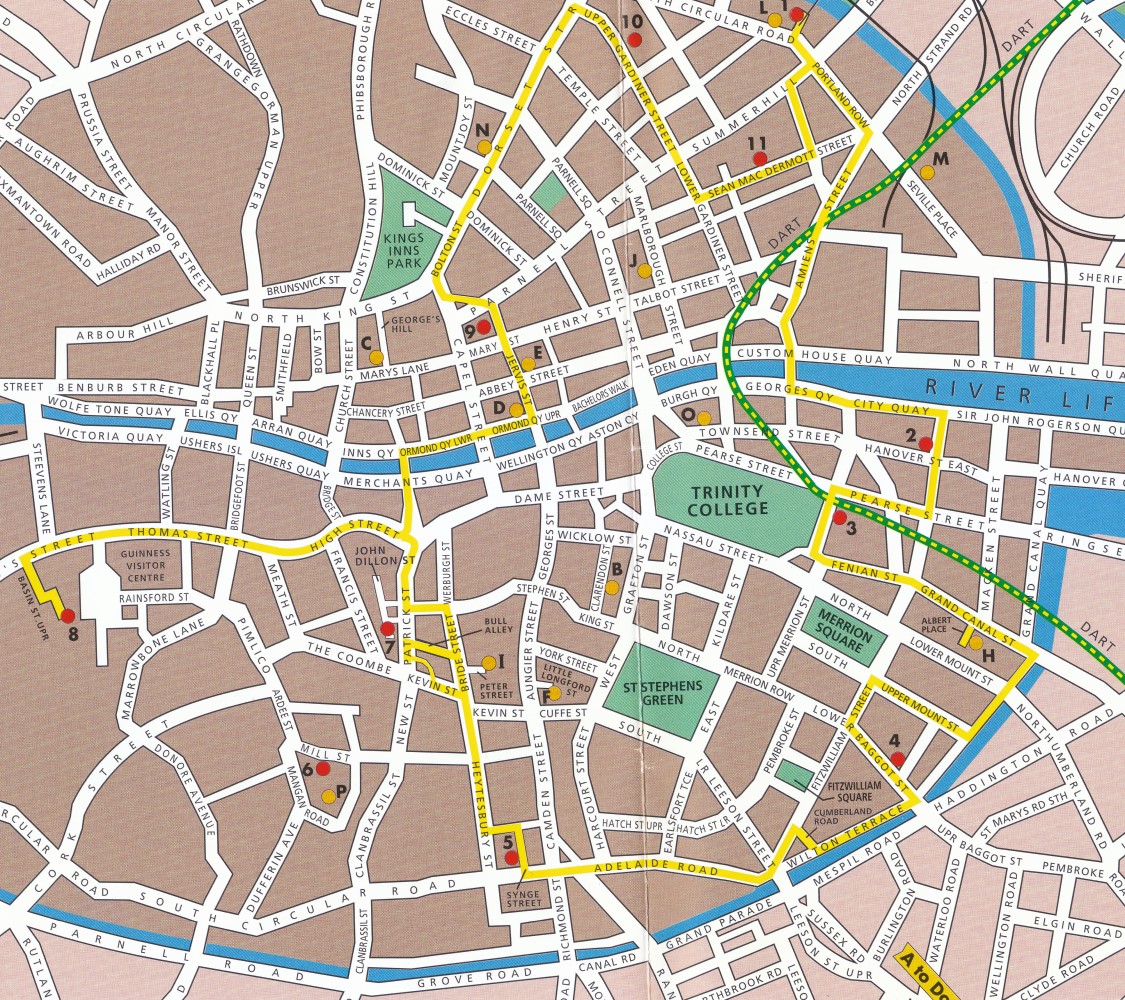
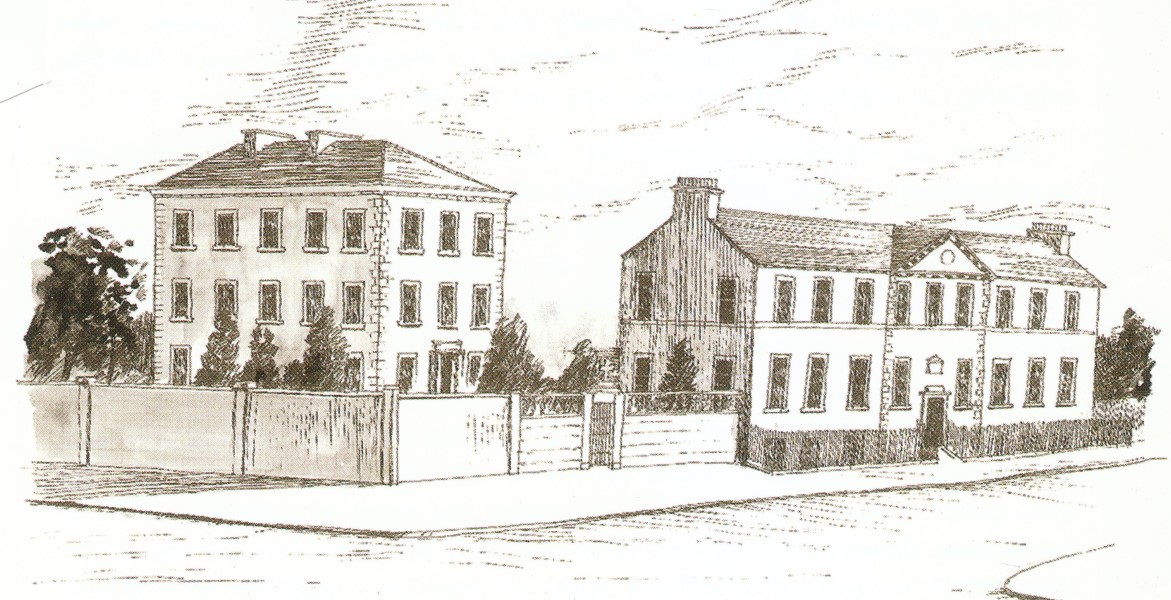 Edmund Rice arrived in Dublin in July 1826 with the aim of establishing a new headquarters for the Congregation of Christian Brothers, a novitiate to train new Brothers, and a model school where teachers could be trained.
Edmund Rice arrived in Dublin in July 1826 with the aim of establishing a new headquarters for the Congregation of Christian Brothers, a novitiate to train new Brothers, and a model school where teachers could be trained.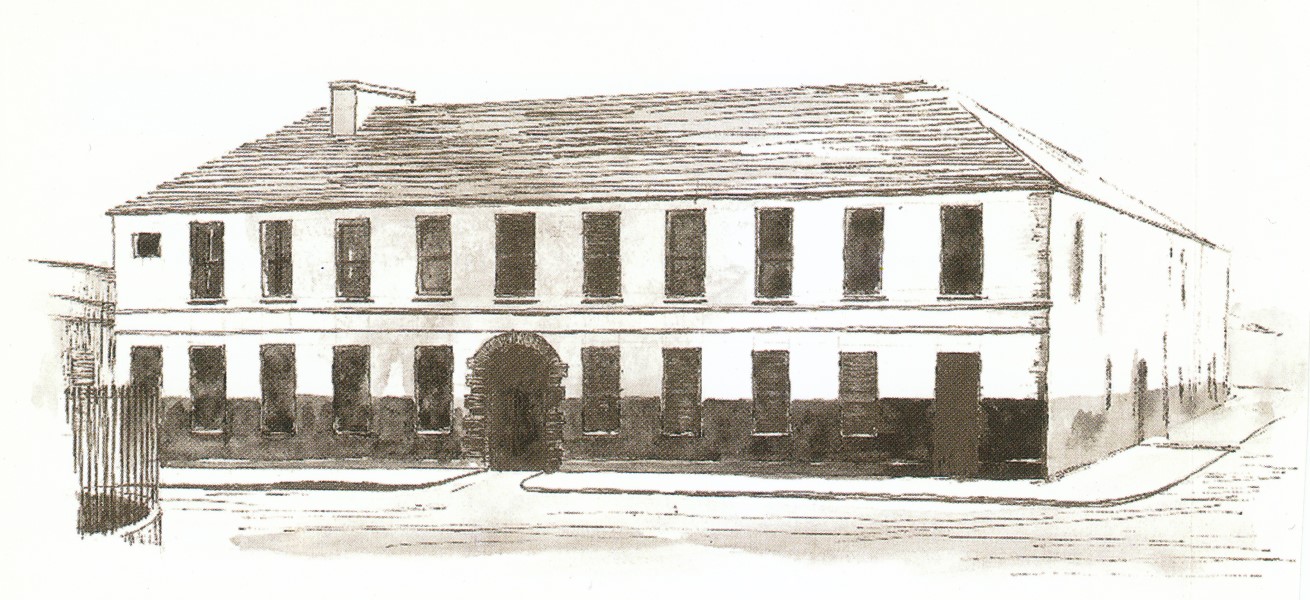 The first of Edmund Rice’s foundations in Dublin was in the parish of St. Andrew in 1812. At the request of Archbishop Murray, two Brothers were sent from Waterford, one being Br. Thomas John Baptist Grosvenor, a companion of the Founder. Originally they lived in Moira Place, now called Albert Place, off Grand Canal Street. They attended Mass in the nearby Townsend Street chapel until St. Andrews church was completed in 1837.
The first of Edmund Rice’s foundations in Dublin was in the parish of St. Andrew in 1812. At the request of Archbishop Murray, two Brothers were sent from Waterford, one being Br. Thomas John Baptist Grosvenor, a companion of the Founder. Originally they lived in Moira Place, now called Albert Place, off Grand Canal Street. They attended Mass in the nearby Townsend Street chapel until St. Andrews church was completed in 1837.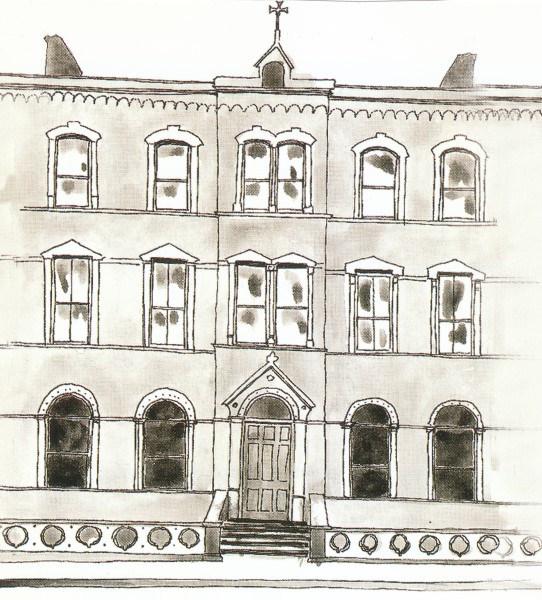
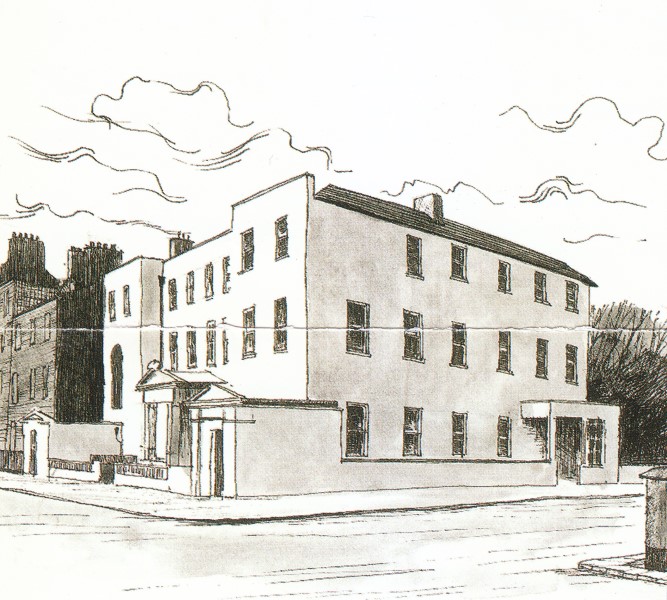 Catherine McAuley, foundress of the Sisters of Mercy, was a contemporary of Edmund Rice. In September 1827 Catherine established a centre at Baggot Street, an affluent area on the south side of the city. Assisted by a number of companions, she provided food, clothing, hospitality and education for many of Dublin’s poor.
Catherine McAuley, foundress of the Sisters of Mercy, was a contemporary of Edmund Rice. In September 1827 Catherine established a centre at Baggot Street, an affluent area on the south side of the city. Assisted by a number of companions, she provided food, clothing, hospitality and education for many of Dublin’s poor.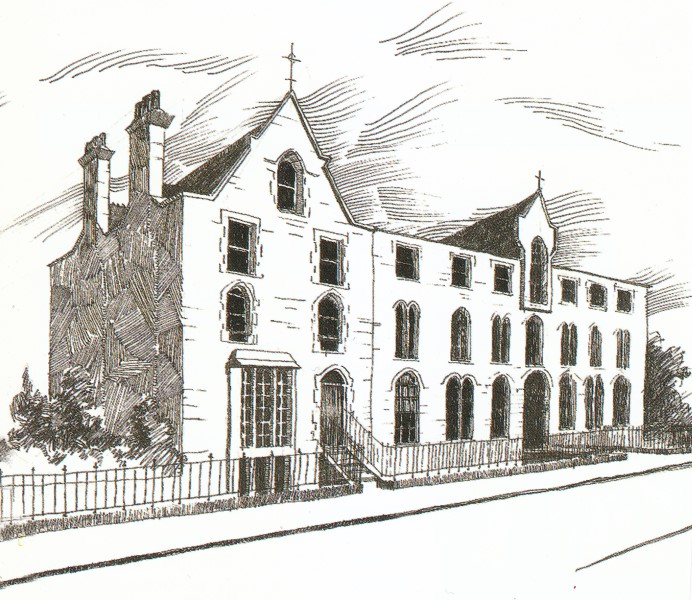 Synge Street school and residence which opened in 1864 was without doubt the inspiration of Br. Edward Patrick O’Flaherty, Director of Francis Street. The foundation stone was laid by Archbishop Cullen. Peter McSwiney, Lord Mayor of Dublin at the time, was one of the first people to enroll his son in the school. By the following year 600 pupils were on the roll books.
Synge Street school and residence which opened in 1864 was without doubt the inspiration of Br. Edward Patrick O’Flaherty, Director of Francis Street. The foundation stone was laid by Archbishop Cullen. Peter McSwiney, Lord Mayor of Dublin at the time, was one of the first people to enroll his son in the school. By the following year 600 pupils were on the roll books.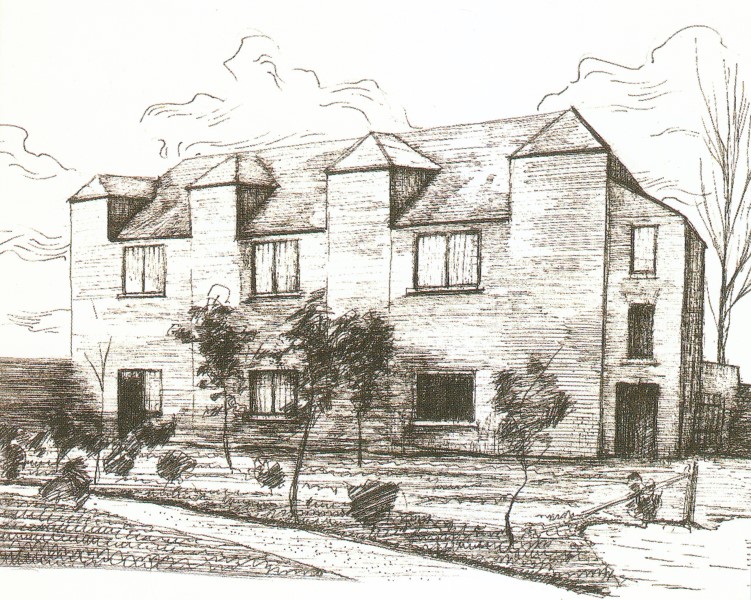 Mill Street was the location of the second foundation of the Brothers in Dublin. No. 10 Mill Street, which once served as the Earl of Meath’s townhouse, became the residence of the Brothers in 1818.
Mill Street was the location of the second foundation of the Brothers in Dublin. No. 10 Mill Street, which once served as the Earl of Meath’s townhouse, became the residence of the Brothers in 1818.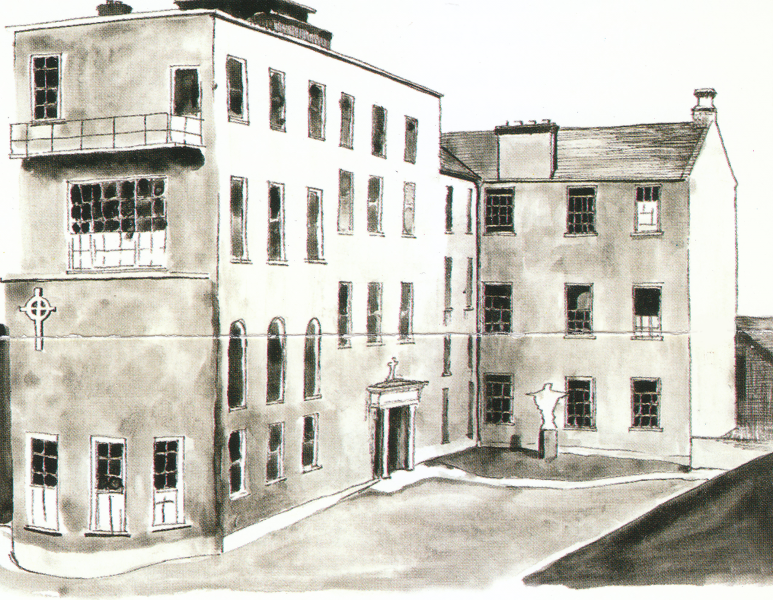 In 1820 Edmund Rice agreed to establish another community in Dublin, this time in James’ Street. Two Brothers were assigned to the new foundation and Br. Francis Manifold was appointed Director.
In 1820 Edmund Rice agreed to establish another community in Dublin, this time in James’ Street. Two Brothers were assigned to the new foundation and Br. Francis Manifold was appointed Director.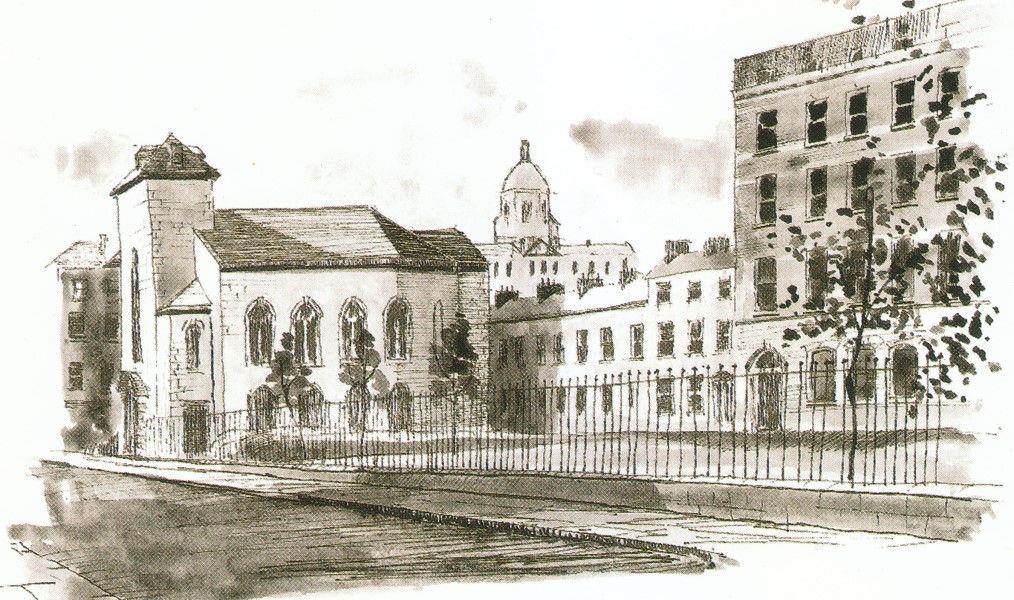 (The drawing shows Jervis Street hospital.)
(The drawing shows Jervis Street hospital.)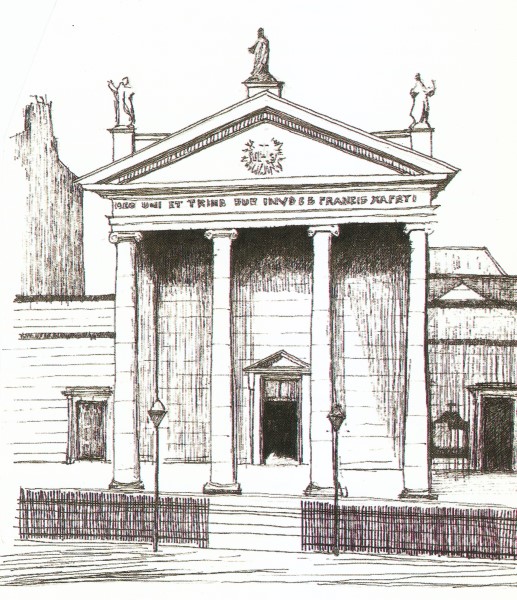 In 1827 the Sisters of Charity acquired a site in Gardiner Street from Archbishop Murray for their new schools. Not all the land was needed so the Superior of the Jesuit community at Hardwicke Street offered to lease the land and build a church there. The first stone of St. Francis Xavier Church was laid in July 1829 and it was opened in May 1852 by the Archbishop.
In 1827 the Sisters of Charity acquired a site in Gardiner Street from Archbishop Murray for their new schools. Not all the land was needed so the Superior of the Jesuit community at Hardwicke Street offered to lease the land and build a church there. The first stone of St. Francis Xavier Church was laid in July 1829 and it was opened in May 1852 by the Archbishop.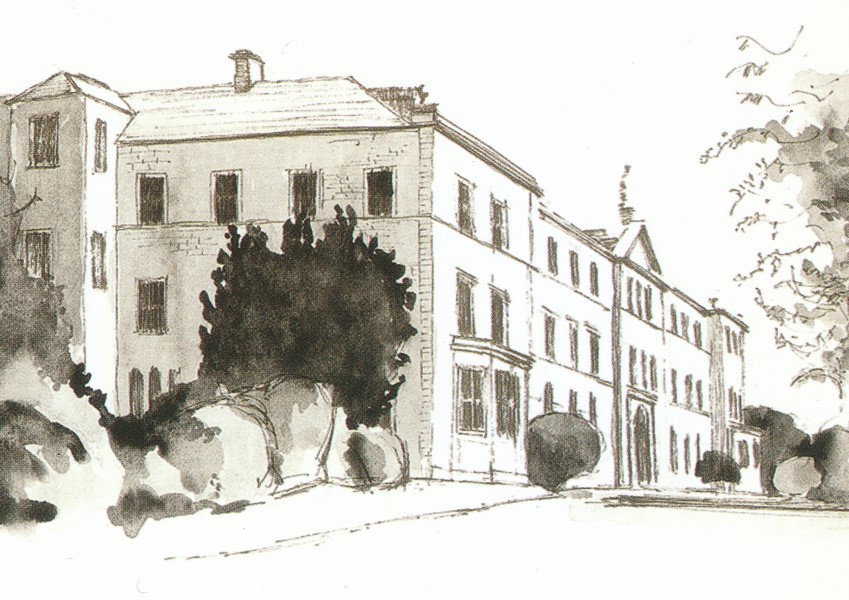 In 1874 the Christian Brothers’ headquarters and the novitiate were transferred from North Richmond Street to Belvedere House, Drumcondra, now on the campus of St. Patrick’s College (part of the DCU Institute of Education).
In 1874 the Christian Brothers’ headquarters and the novitiate were transferred from North Richmond Street to Belvedere House, Drumcondra, now on the campus of St. Patrick’s College (part of the DCU Institute of Education).